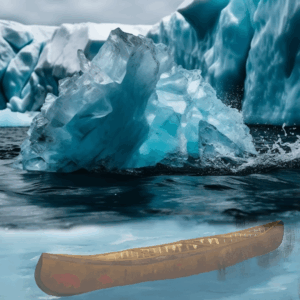The impact of climate change on Inuit homelands

This Indigenous Peoples Month, we honour the strength and leadership of Inuit communities—especially as they confront the frontlines of climate change with resilience, knowledge and vision.
Inuit communities live in some of the most climate-impacted regions on Earth. The Arctic is warming at nearly four times the global average, causing devastating and immediate impacts to the land, wildlife, infrastructure and ways of life that Inuit Peoples have sustained for millennia.
Climate change here is not a distant threat—it’s a daily reality. Melting permafrost is destabilizing homes and critical infrastructure. Sea ice is thinning and disappearing, making traditional hunting routes dangerous or inaccessible. Wildlife migration patterns are shifting, threatening food security and disrupting deeply rooted relationships with the land and animals.
For Inuit communities, these changes affect everything—from housing and transportation to culture, mental health and survival. And yet, Inuit Peoples are not passive victims. They are powerful voices and leaders in the global climate justice movement.
Organizations like the Inuit Circumpolar Council and Inuit Tapiriit Kanatami are advocating for urgent climate action that centers Inuit knowledge, rights and sovereignty. Their message is clear: the solutions to the climate crisis must be Indigenous-led. Inuit Qaujimajatuqangit—Inuit ways of knowing—hold generations of insight about how to live in balance with the Earth.
Climate justice for Inuit is not about charity or saving the Arctic—it’s about respecting sovereignty, uplifting Indigenous leadership and recognizing that the health of the Arctic is inseparable from the health of the planet.
As the ice melts, the world is watching. The time to act in solidarity is now.
